- Home
- Vince Flynn
Transfer of Power Page 2
Transfer of Power Read online
Page 2
Rapp continued down the street, his alert eyes taking inventory of everything on the block. He noted every window and every doorway. He looked beyond the doorframes and the curtains, into the shadows. If this was a trap, that was where they would be waiting.
Rapp turned onto an even narrower street. Sixty feet down, the American ducked into an alley that had been built long before cars were envisioned. The tunnel-like passage was four feet wide and enclosed in darkness. Slowing his pace, Rapp stopped in the second alcove on his left and closed his eyes. He set his canvas bag of bottles and cans down and listened intently while squeezing his eyelids tighter, trying to speed up the process of adjusting to the near total darkness.
White House Situation Room
GENERAL CAMPBELL FINISHED the mission briefing and stood at the far end of the room with Kennedy. For the last twenty-four hours they had worked almost nonstop to get everything in place, and now they looked on somewhat helplessly as the president analyzed the pros and cons of the mission. After a minute of silence President Hayes looked at Director Stansfield and asked, “Who is this man we have on the ground?”
Director Stansfield closed his mission summary and placed it on the table. “He is one of our best. Fluent in three languages, not counting English, and he understands another half dozen dialects well enough to get by.”
“Is he American?”
“Yes.”
President Hayes nodded slowly, and then asked the million dollar question. “Instead of exposing ourselves by trying to grab Harut . . .” The president paused and formulated the most tactful way to say what he was thinking. “Why don’t we have your man—” The president looked to Kennedy. “What is his name?”
“His code name is Iron Man.”
“Why don’t we have this Iron Man . . . eliminate Harut?” President Hayes looked cautiously around the room, nervously aware that what he had just suggested was against the law.
“We have looked at that as an option, Mr. President, but there is another issue we haven’t discussed.” Kennedy looked to her boss.
Stansfield sat leaning back in his chair with one leg crossed over the other. He removed his left hand from his chin and said, “We have just recently come into some information,” Stansfield stated evenly, “that is directly related to this operation. Yesterday I received a call from one of my counterparts abroad. They informed me that Hamas is targeting Washington for a terrorist attack. When and where is not certain, but we have a corroborating source that can confirm this intelligence.”
Hayes shook his head and uttered a curse under his breath. “Where did you get this information?”
“Our Israeli friends brought it to my attention several weeks ago, and it was corroborated by the British this morning.”
“Elaborate, please.” Hayes made a rolling motion with his index finger.
“The Israelis picked up a Hamas commander during one of their sweeps through the West Bank about a month ago. While they were interrogating him, he made several references to an attack that was being planned here in Washington. The Israelis couldn’t get anything more out of the commander on this issue, except that the man behind the operation is none other than Rafique Aziz.”
President Hayes swiveled in his chair and looked up at the smaller screen that vividly showed the carnage left from one of Aziz’s bus bombings in Israel. The mere thought of the same thing happening in Washington, D.C., caused the president’s blood to boil.
“This dovetails,” continued Stansfield, “with the NSA’s report that Saddam has offered to bankroll any terrorist attack that is carried out in the United States.”
President Hayes looked at the director of the CIA and rose out of his chair. He reminded himself to stay calm. Saddam had become the unreachable thorn in America’s back, and it was time to start dealing with him in a more ruthless manner.
With sarcasm dripping from his voice, the president said, “This is just wonderful.” All Hayes could think about was the lunatic terrorism of the Middle East playing itself out in the streets of America. He knew there was no way he could allow it to happen, not if he could take the battle to them first.
Irene Kennedy half listened to the conversation between the two generals, her boss, and the president. At the moment, she was more concerned with Mitch Rapp. Rapp was her recruit, and she had grown very fond of him. There was nothing sexual about the connection; it was more in the nature of a bond between two people who had been through the wringer together.
Kennedy had spent more than half of her youth bouncing around the Middle East as her father was moved from one embassy to the another. As a State Department brat she saw nothing unusual in this, since most of her friends had gone through similar experiences. In fact Kennedy had loved growing up in the Middle East, but unfortunately all of those fond memories came crashing down in April of 1983 when a car bomb ripped through the U.S. embassy in Beirut. Kennedy’s father was killed in the blast, and her life was forever changed.
The anger she felt in the wake of the tragedy had led her to the CIA, and it didn’t take Langley long to make up their mind about Kennedy. She had spent twelve years of her life growing up in Middle East, she had a doctorate in Arabic studies, and she was motivated. Kennedy was earmarked from the very start for counterterrorism. Now, some sixteen years later, she was running the show at the Counterterrorism Center.
But that was only part of Kennedy’s story—the part that was reported to the legislative oversight committees. A separate job that fell under Kennedy’s purview was responsibility for the Orion Team, one of the most secretive organizations within the CIA. Only a handful of people knew of the group’s existence, and it was to stay that way indefinitely. It had to. The group had been formed by Director Stansfield in response to another terrorist incident. The downing of Pan Am Flight 103 over Lockerbie, Scotland, in December of 1988. Irene Kennedy was given the reins and instructed to build a group with one single task—to hunt down and kill terrorists. As Director Stansfield had said at the time, “There are certain people here in Washington who have decided it is time to go on the offensive.” Who those people were, Kennedy had never asked, and in truth, she never wanted to know. She only knew that she agreed with the strategy and was willing to risk everything to help implement it. That risk was very real, and by no means marginal. If the wrong people on the Hill, or over at Justice, ever got wind of the Orion Team, they would hold an inquisition, and Kennedy’s head would be the first one on the chopping block.
The truth was, the American people would never be able to stomach the escapades of Mitch Rapp and the Orion Team. In the political grandstanding that would take place under a congressional investigation, everyone would forget the fact that it was a war. The team would be portrayed as a group of rogue operatives with complete disregard for the Constitution. Someone like Rapp, who was at this very moment putting his life on the line, would be eaten alive by the country-club liberals and conservative opportunists looking to make a name for themselves.
Kennedy felt the burden of responsibility for Rapp. She was the one that had gone to Syracuse University in the winter of 1988 and discovered him. He did not find the CIA—as she had done after her father’s death—they had found him. Thirty-five students from Syracuse had perished on Pan Am Flight 103, and one of them had been Mitch Rapp’s high school sweetheart. Irene Kennedy had dangled the prospect of revenge in front of an anguished Rapp, and he had leapt at the chance without a moment’s hesitation. Now, a decade later, they had turned him into quite possibly the most efficient and lethal killer in the modern era of the Agency.
President Hayes had heard enough. He pondered the ramifications for a long moment. If he chose not to act, the end result could cost American lives. Yes, he could lose men tonight, but these men had assumed a risk when they signed up. If he walked away, it could cost the lives of noncombatants. Hayes knew what he had to do.
With a no-nonsense tone, the president asked, “General Campbell, what do you think we shoul
d do?”
In his clipped military tone, Campbell replied, “I think it’s an opportunity we can’t pass up, Mr. President.”
“Dr. Kennedy, I assume you think we should go in?” asked Hayes.
“Yes, Mr. President.”
“Thomas?” Hayes looked to the director of the CIA.
Stansfield paused for a second and then nodded.
The president turned lastly to General Flood. “Jack, what do you think?”
The general folded his large hands and thumped them on the table once. “I think we should grab him.”
President Hayes squinted at the map of Iran on the large screen while he thought about the potential risk. After about twenty seconds of silence, he said, “You have my authorization.”
As soon as the sentence was completed, Kennedy and Campbell were on the phone giving the mission the green light to the various players and commands involved.
Stansfield slid two white sheets of paper across the table. They were identical. One was for the president’s records, and the other was for Stansfield’s. The president grabbed a pen from his breast pocket and put his signature on both sheets. The relatively bland document was a presidential finding, required by law whenever the president authorized any type of covert mission. These simple documents had been a source of much controversy in Washington over the years.
“When do you plan to notify the committees?” asked President Hayes.
By law, the chairman and ranking minority member of both the House and Senate intelligence committees had to be informed of the intended action before it took place. This, however, was an area that was grayer than the London sky and one that was abused often, and sometimes for good reasons.
Stansfield placed his signed copy in a folder and said, “Fortunately, the gentlemen in question all have plans for this evening. I will alert their aides that I need to speak to them in about an hour. If all goes well, they will not be able to make it out to Langley until after our people have safely completed their job.”
“Good.” President Hayes stood and pulled on his cuff links. “My wife and I will be attending an event at the Kennedy Center. Where are you going to monitor the mission?”
“At Langley,” replied Stansfield.
“Keep me updated, and good luck.” With that the president left the room.
2
Strait of Hormuz, Persian Gulf
THE WIND SWEPT across the surface of the dark water as layers of billowing, low-slung clouds raced overhead in a crisscrossing pattern. The higher cluster headed northwest toward the open water of the Persian Gulf, while the lower clouds moved inland from the island dotted Strait of Hormuz to the mainland of ancient Persia and present-day Iran. The moon peeked through an occasional hole in the clouds. With the howling wind, the rain came and went in varying degrees of strength. It was not a night to be on the water.
In the shallows of a five-foot swell, a mast broke the surface and continued to rise, slashing into the high side of the trough like the ominous dorsal fin of a shark. White foam churned behind the narrow object as it continued southward. Rising a full ten feet above the waves, it instantly began to search the night sky. The thin tiger-striped object was an electronic support-measures antenna designed to detect radar emissions. Seconds later the thin mast was joined by another. This mast scanned the horizon a full three hundred sixty degrees, and then both objects submerged as quickly as they had appeared.
Underneath the stormy surface, a very expensive piece of hardware silently stalked the coast of Iran. Unbeknownst to all but her crew, she had just released her lethal cargo. As the 688-class attack submarine turned for international water, two heads bobbed to the surface and then three more. The swells rose and fell around them as they converged in a circle. One of the men wrestled with a black bag, freed the strap that was holding it together, and then pulled a cord. The IBS (inflatable boat: small) began to unfold and fill with air. Less than a minute later the boat was fully inflated, and two of the men began the process of attaching a small outboard engine to the back, while a third readied the fuel bladder. The rough seas tossed the boat in every direction, but the men worked undeterred.
As soon as the motor was secured, the last two men climbed into the boat, their black wet suits making them nearly invisible against the dark rubber. The engine was primed three times, and on the second pull it caught. The man in back twisted the throttle, and they scooted forward up the side of a swell.
Lieutenant Commander Dan Harris held on to one of the straps at the front of the boat and checked the compass strapped to his wrist. Next he looked at his Global Positioning System. The small GPS device strapped next to his compass used eighteen satellites orbiting the earth ten thousand miles up in space to tell him his exact location to within four meters. The submarine had dropped off Harris and his men thirty meters from where he had requested. Harris grinned through his thickly bearded face at the professionalism demonstrated by those anal-retentive submariners. They were, from top to bottom, nothing if not perfectionists.
The muscular commander gripped the hand strap a little tighter as the boat crashed nose first into the shallows of a swell. Dan Harris, Annapolis class of ’81, was somewhat of an oddity. He was both cultured and uncouth, temperamental and unflappable, angry and calm, emotional and logical, compassionate and ruthless—he was, in short, whatever the situation dictated. He had learned by watching the naval special-warfare commanders that had gone before him. The U.S. Navy was a huge bureaucracy, and if you wanted to be able to run your command your own way, you had to spend an awful lot of time stroking the egos of the admirals who wrote the orders. Lt. Commander Dan Harris had walked that fine line almost to perfection, and that was why he was about to head into action while his colleagues were sitting behind desks at Little Creek and Coronado.
The small rubber boat slammed into a wave, and a deluge of cool, salty water sprayed over the bow, drenching the five bearded members of the U.S. Navy’s top secret counterterrorist force SEAL Team Six. Harris shook the water from his face, and his ponytail whipped from side to side in the air behind him. The five men crashing through the rough water on this stormy night were known in the covert-operations business as longhaired SEALs. They were allowed to break Navy regulations on facial hair and hair length for just this type of mission. They were the best shooters in the business, and hence, given the most clandestine and often roughest missions.
The men possessed many similar traits, but at first glance the most notable was their dark features. Lt. Commander Harris had handpicked the men, and for tonight’s mission they were traveling extra light. Harris had brought along his best. There would be no room for mistakes.
Bandar Abbas, Iran
A LARGE WAVE crashed to the beach, its back end sending a spray of salt water into the air. Mitch Rapp adjusted his turban and wiped the salt water from his face. He looked up and down the coast checking to make sure he was alone. Walking toward the pier to the north, he stopped, picked up a pop can and dropped it into his canvas bag. He continued his hunched shuffle. When he reached the wood pier, he walked underneath and checked the other side. Next, he walked back under the pier and up the incline of beach to check the small recesses where the wooden structure was secured to its concrete foundation. For the next ten minutes Rapp methodically checked every part of the structure to make sure it was unoccupied. He had picked the landing zone, and it was his responsibility to make sure there were no surprises.
Rapp checked his watch while the wind whistled through the tangled web of wood pilings that supported the pier. Everything was on schedule. Rapp had given up almost ten years of his life for this moment, and he was not going to let it slip away.
Persian Gulf
THE NUCLEAR-POWERED aircraft carrier USS Independence pounded through the stormy waters. She and her battle group of twelve ships and two submarines had been on patrol in the northern part of the gulf for the last twenty-three days. Late the previous evening the group had been ordered t
o proceed on a sweep to the south and east, back toward the Strait of Hormuz.
Just three hours earlier, under the cover of darkness, the large gray carrier had taken on two U.S. Air Force helicopters, which now sat just amidships of the carrier’s island structure. Both helicopters were painted a flat tan with stripes of a slightly darker brown. They belonged to the 1st Special Operations Wing—the people in charge of getting American commandos in and out the hairiest places on earth. The first and larger of the two helicopters, was a MH-53J Pave Low. With a price tag of close to forty million dollars, the Pave Low was considered the most advanced military helicopter in the world. It took a crew of six to fly this large and complex helicopter, and its navigational system rivaled those of the most advanced fighter-bombers in the U.S. arsenal. The Pave Low was equipped with the Air Force’s Enhanced Navigation System, or ENS. Using twenty separate systems, such as Doppler navigation, automatic direction finders, attitude director indicators, GPS, and a bevy of compasses and gyroscopes, the ENS told the pilots exactly where they were at all times.
This system was what allowed the highly trained aviators of the 1st Special Operations Wing to fly hundreds of miles, at treetop level, in the worst of weather conditions and land exactly on a target within seconds of their stated extraction or infiltration time. Which, in the business of special ops, could mean the difference between success and failure, or more pointedly, life and death. It took an unusual aviator to handle this large, complicated helicopter and the Air Force made sure that only the most qualified pilots were given the controls of these technological marvels.
The second helicopter was only two-thirds the size of the hulking Pave Low. The MD-5300 Pave Hawk was equipped with a reduced version of the Pave Low’s Enhanced Navigation System. The smaller, more agile, helicopter would be riding shotgun for tonight’s mission. Inside both crafts, the pilots and flight crews were methodically running down their preflight checklists. There would be no room for mistakes. The slightest mistake could result in death and if it happened over land, worse, an international incident.

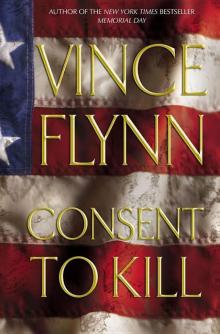 Consent to Kill
Consent to Kill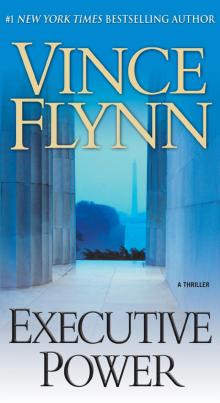 Executive Power
Executive Power Protect and Defend
Protect and Defend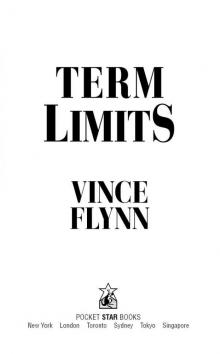 Term Limits
Term Limits American Assassin
American Assassin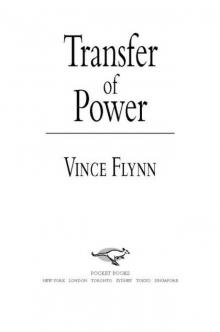 Transfer of Power
Transfer of Power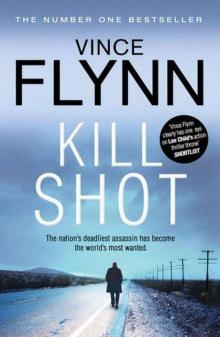 Kill Shot
Kill Shot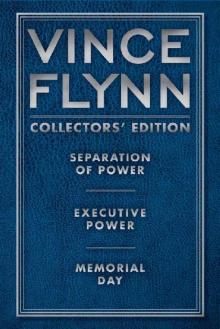 Vince Flynn Collectors' Edition 2
Vince Flynn Collectors' Edition 2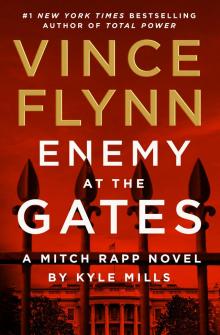 Enemy at the Gates
Enemy at the Gates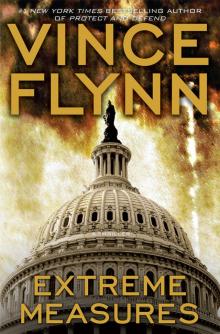 Extreme Measures
Extreme Measures Enemy of the State
Enemy of the State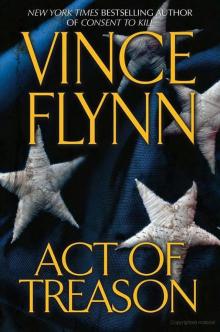 Act of Treason
Act of Treason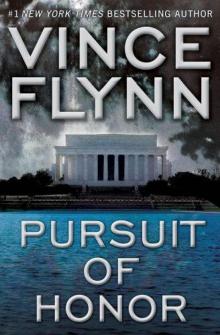 Pursuit of Honor
Pursuit of Honor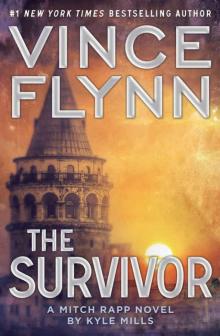 The Survivor
The Survivor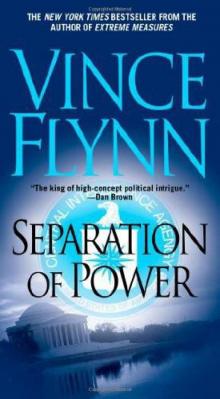 Separation of Power
Separation of Power Memorial Day
Memorial Day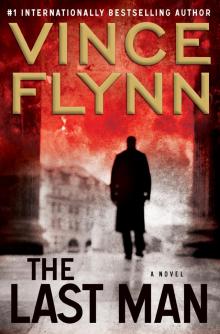 The Last Man
The Last Man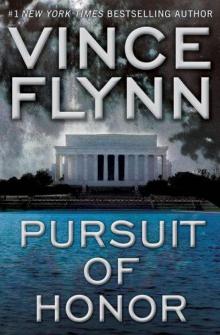 Pursuit of Honor_A Thriller
Pursuit of Honor_A Thriller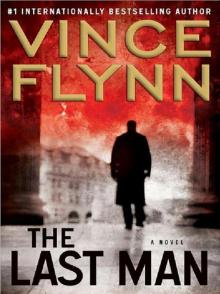 Mitch Rapp 13 - The Last Man
Mitch Rapp 13 - The Last Man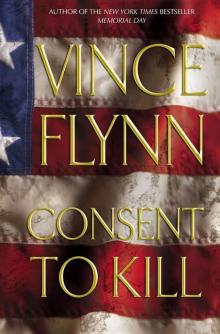 Consent to Kill:
Consent to Kill: Red War
Red War Mitch Rapp 02 - The Third Option
Mitch Rapp 02 - The Third Option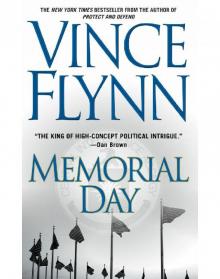 Mitch Rapp 05 - Memorial Day
Mitch Rapp 05 - Memorial Day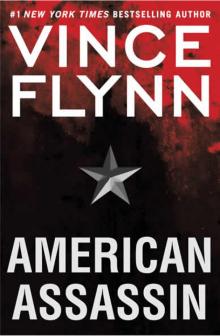 Mitch Rapp 11 - American Assassin
Mitch Rapp 11 - American Assassin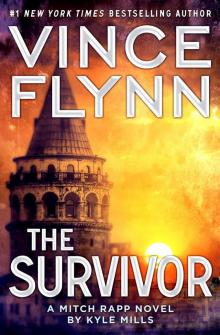 Mitch Rapp 14 - The Survivor
Mitch Rapp 14 - The Survivor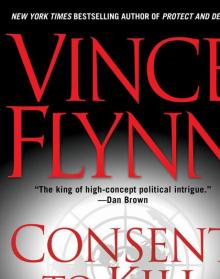 Mitch Rapp 06 - Consent to Kill
Mitch Rapp 06 - Consent to Kill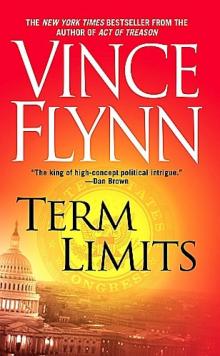 Term Limits mr-1
Term Limits mr-1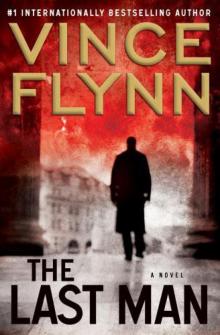 The Last Man mr-13
The Last Man mr-13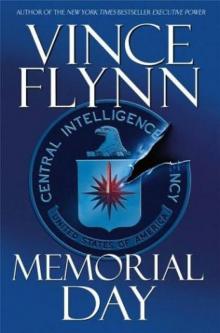 Memorial Day mr-5
Memorial Day mr-5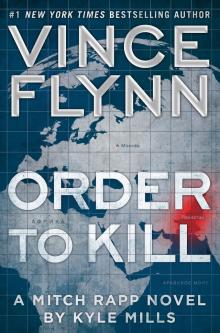 Order to Kill
Order to Kill American Assassin: A Thriller
American Assassin: A Thriller Separation of Power mr-3
Separation of Power mr-3